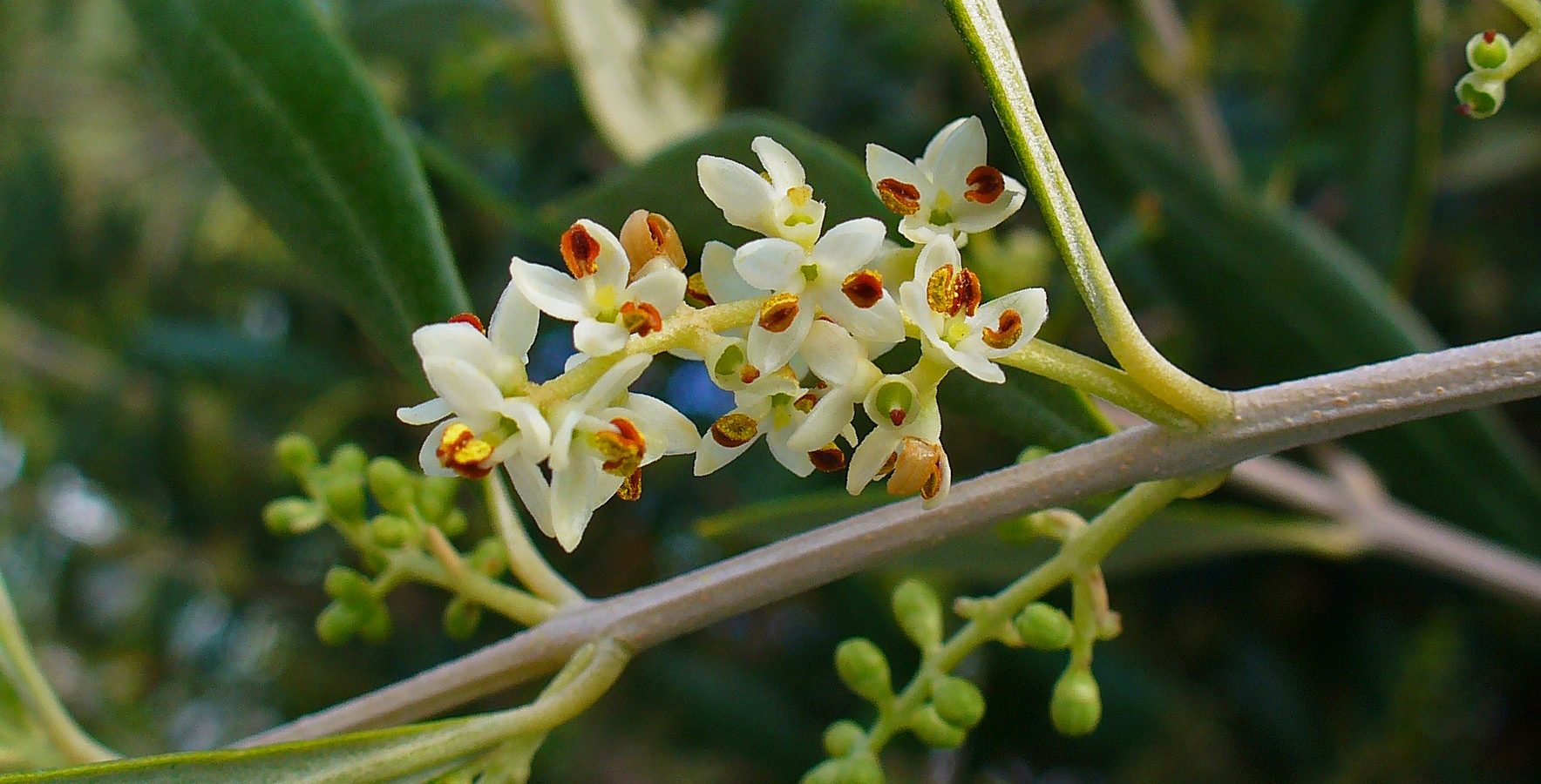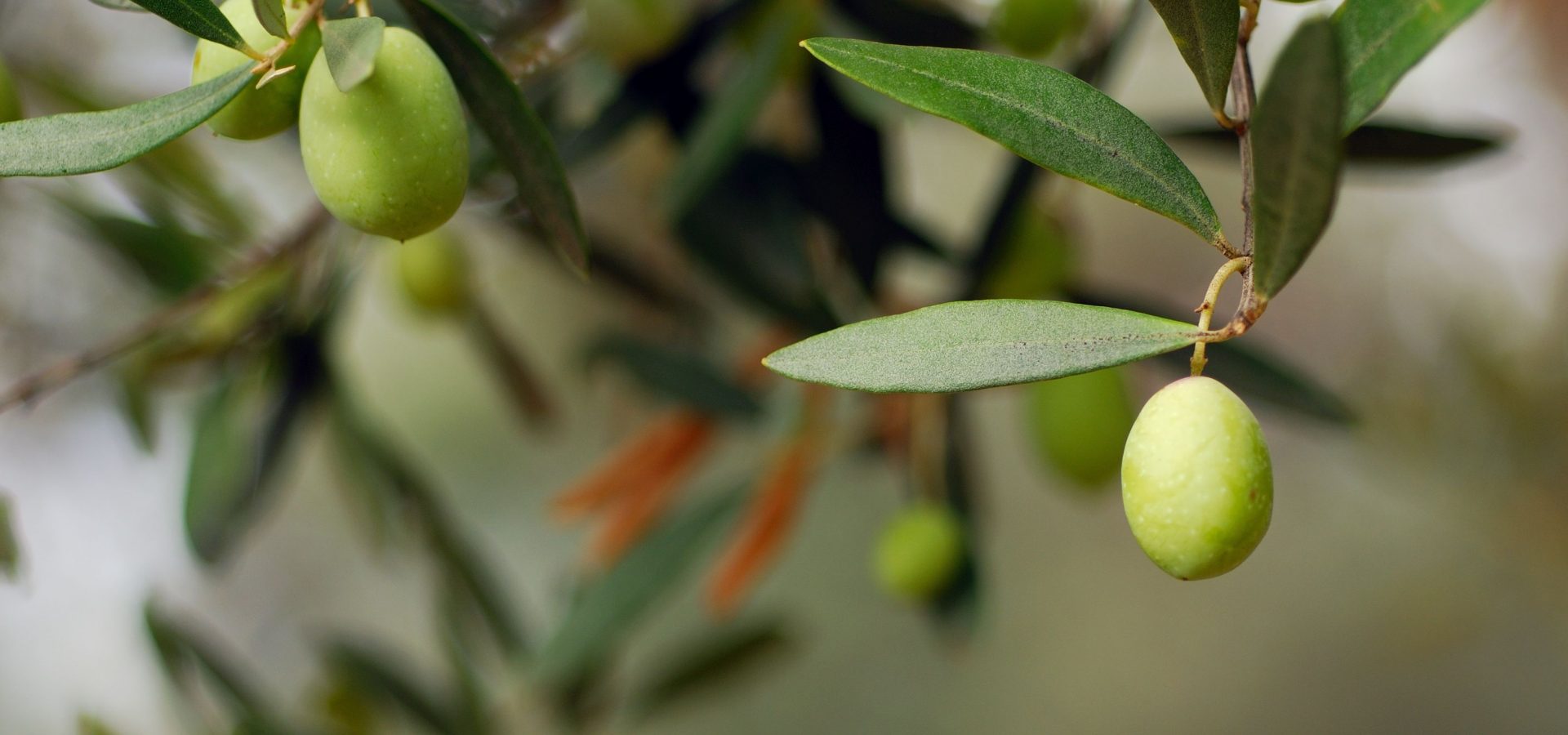Turgay Unver et al. Genome of wild olive and the evolution of oil biosynthesis, Proceedings of the National Academy of Sciences, 201708621, 2017 link
The olive tree (Olea europaea) fields are an important element of a sustainable and ecological landscape, in the Mediterranean Basin and other parts of the world, including hills and soils that are not appropriate for other crops. In fact, large worldwide countryside areas, and in particular in the Mediterranean Basin, are nowadays inconceivable without the olive grove landscape. The olive tree is resistant to both drought and salinity, being therefore a good candidate to fight the climate change and global warming (Morte and Varma, 2014).
This plant is also a strategic crop from the socioeconomic point of view. Thus, it generates jobs and social welfare for many families on low-rent rural areas. The economic importance of this crop includes its cultivation, the harvesting of olives and the production and marketing of the olives and the olive oil (Elmenofi, 2012). Spain is the first world producer and exporting country of olive oil and table olives, with the largest olive grove area and the largest number of olive trees. As an example, the Spanish farms devoted almost exclusively to the olive tree cultivation are about 2’1 millions, generating about 32 million direct wages each year: 16’65 million wages for harvesting and the remaining 15,35 million wages for the olive tree care and maintenance, as published by the Olive Oil Agency (AAO; from Spanish “Agencia para el Aceite de Oliva” <http://aao.mapa.es>), the International Olive Council (IOC; <http://www.internationaloliveoil.org>) and the FaoStat <http://faostat.fao.org> from the Food and Agriculture Organization of the United Nations (FAO; <http://www.fao.org>).
The olive tree produces bioactive micronutrients, including antioxidant phenolic-compounds (oleuropein, hydroxytyrosol, alpha-tocopherol or vitamin E, carotenes, etc), with key relevance in pharmacy, medicine and cosmetics, among others applications. Indeed, its fruit (olives) and its juice (olive oil) are key elements of the healthy Mediterranean diet, and the olive-tree leaves are being used to produce extracts and isolate commercial antioxidant and wound-healing products (Hashmi et al, 2015).
Thus, the olive oil consumption is growing outside the Mediterranean-Basin traditional olive-tree grove areas, including America (United States, Mexico, Brazil, Argentina, Peru), Asia (China and India) and Australasia (Australia), as reported by FAO 2015 <http://faostat.fao.org>. Such expansion is mainly due to the recognition of the dietetic properties of olive oil, as source of healthy fatty acids and micronutrients (antioxidants like phenolic compounds, vitamin E, carotenes, etc) (Hashmi et al, 2015).
In fact, the olive oil has been granted a qualified health-claim, reducing the cardiovascular-disease risk (coronary-heart disease) by the Food and Drug Administration (FDA) of the United States of America (USA) <http://www.fda.gov/Food/IngredientsPackagingLabeling/LabelingNutrition/ucm073992.htm>. This represents the third FDA-approved claim for conventional foods, after nuts and omega-3 fatty acids <http://www.fda.gov/Food/GuidanceRegulation/GuidanceDocumentsRegulatoryInformation/LabelingNutrition/ucm064923.htm>.
Olive tree synthesizes both polyols (mannitol) and oligosaccharides (raffinose and stachyose) in leaves, which are further exported with sucrose into fruits, for both general metabolism and as precursors of olive oil biosynthesis (Conde et al, 2008). Lipid biosynthesis in plants has been recently reviewed in important oil crops like soybean, further comparing it to oilpalm, olive tree and rapeseed (Guschina et al, 2014). Despite triacylglycerol (TAG) biosynthesis being a complex process in olive tree (Salas et al, 2000), the authors were able to simplify it into the two main reaction blocks. They involve fatty acid synthesis (plastid) and complex-lipid assembly (endoplasmic reticulum). On the other hand, oleuropein (and other related phenolic compounds) biosynthesis and its role in human health based on its antioxidant and antimicrobial properties has been reviewed elsewhere (Soler-Rivas et al, 2000).
The olive-tree biology in general and bioproduction in particular (reproductive biology) exhibits the peculiarity of alternate bearing, as we have described linked to nutrition metabolism (Turktas et al, 2013) and microRNA (miRNA) (Yanik et al, 2013). Its two-step bud-flowering induction is a complex long-lasting process (Fabbri and Benelli, 2000). Additionally, its reproductive (pistil and pollen) transcriptome has been recently collected in the ReprOlive database, including also control vegetative tissues (Carmona et al, 2015).
Sequencing the olive-tree genome will allow to better understand this crop, to accelerate flowering (the olive tree may take years to blossom), increase production of leaves, olives and olive oil, and fight the diseases and pests associated with this crop, like infections with fungi (Verticillium dahliae and Spilocaea oleagina) and bacteria (Pseudomonas savastanoi). This will further enhance translational approaches, allowing to bring the research results to the market, the society and the environment. One of them is the development of biorefineries using waste and residues from olive-tree pruning and olive-oil production, for an ecological and sustainable bioeconomy. Thus, this should have a significant impact on both the social welfare of many families on low-rent rural areas growing olive tree groves, as well as the olive tree-related industry worldwide, further protecting the environment and worldwide climate.
References
- Carmona R, Zafra A, Seoane P, Castro AJ, Guerrero-Fernández D, Castillo-Castillo T, Medina-García A, Cánovas FM, Aldana-Montes JF, Navas-Delgado I, Alché JdD, Claros MG (2015): ReprOlive: a database with linked data for the olive tree (Olea europaea L.) reproductive transcriptome. Front Plant Sci 6: 625 (14 pp).
- Conde C, Delrot S, Gerós H (2008): Physiological, biochemical and molecular changes occurring during olive development and ripening. J Plant Physiol 165: 1545-1562.
Elmenofi GAG (2012): Value chain analysis for poverty reduction a case study of Egypt olive value chain. Alexandria Journal of Agricultural Research 57: 231-241. - Fabbri A, Benelli C (2000): Flower bud induction and differentiation in olive. Journal of Horticultural Science and Biotechnology 75: 131-141.
- Guschina IA, Everard JD, Kinney AJ, Quant PA, Harwood JL (2014): Studies on the regulation of lipid biosynthesis in plants: application of control analysis to soybean. Biochim Biophys Acta. 1838:1488-500.
- Hashmi MA, Khan A, Hanif M, Farooq U, Perveen S (2015): Traditional uses, phytochemistry, and pharmacology of Olea europaea (plive). Evidence-Based Complementary and Alternative Medicine: 541591.
- Morte A, Varma, A (eds) (2014): Root Engineering – Basic and Applied Concepts. Springer (Berlin, Germany).
- Salas JJ, Sánchez J, Ramli US, Manaf AM, Williams M, Harwood JL (2014): Biochemistry of lipid metabolism in olive and other oil fruits. Prog Lipid Res 39: 151-180.
- Soler-Rivas, C, Espín, JC, Wichers HJ (2000): Oleuropein and related compounds. J Sci Food Agric 80: 1013-1023.
- Turktas M, Inal B, Okay S, Erkilic EG, Dundar E, Hernandez P, Dorado G, Unver T (2013): Nutrition metabolism plays an important role in the alternate bearing of the olive tree (Olea europaea L.). PLoS One 8:e59876 (15 pp).
- Yanik H, Turktas M, Dundar E, Hernández P, Dorado G, Unver T (2013): Genome-wide identification of alternate bearing-associated microRNAs (miRNAs) in olive (Olea europaea L.). BMC Plant Biology 13: 10 (22 pp).
The IOGC web site will serve for:
- open, accessible registration/participation in the consortium
- the dissemination of general information and scientific updates, on sequencing the olive genome, transcriptome and other noteworthy national and international research activities
- ultimately input to and view/review of the Olive science plan.






